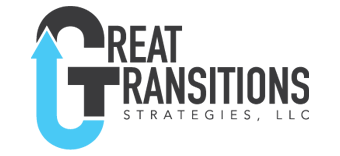The best team I was ever on had a culture of trust, teamwork, and shared responsibility. No one cared who got the credit as long as we accomplished the mission. We rowed hard together,
argued on the best way to move forward, and looked out for each other.
The worst team I was ever on had a culture of mistrust but on the surface professed support for each other. Teamwork was a façade to gain more information to advance personal agendas.
Getting credit for accomplishments and face time with the boss were the highest priority for the individuals.
Quite the contrast isn’t it? I would venture to guess the above descriptions might toggle some personal memories for you. Do you think the above cultures are what the leaders of each team
wanted? Regardless of whether they wanted them or not, the leaders’ action allowed/fostered/encouraged/supported the culture they got.
What is the culture you set for your organization? What are your deliberate actions? Some of us can tell you exactly what we do. Others, not so much.
Here are some thoughts on deliberately setting a culture.
In my view culture is made up of two components; values and behavior. There are a number of scholarly articles in this area. Here is my practical take after working with numerous individuals
and organizations on values.
When I say values, what does that mean to you? For me, values are the personal and organizational beliefs that provide standards and guide actions. Values are our motivations.
They are why we get up in the morning, pursue specific goals, and do what we do. We are in constant pursuit to fulfill our values. When fulfilled we are happy and content. When not
fulfilled we are uncomfortable and conflicted.
List some values that are important to you. Here are a few typical examples; truth, respect, altruism, and power. Now define those values:
1. __________ ____________________________________________
2. __________ ____________________________________________
3. __________ ____________________________________________
When you look at your definitions, do they describe a behavior that will fulfill that value? The definitions of values usually do. Because this is how that value gets fulfilled. When we
experience behavior not in line with our definition it creates stress within us. The stress comes from being misaligned with the actions around us.
The essential question is:” What makes up the culture of an organization?” It is the collective behaviors of the individuals in that organization. What is rewarded, what is accepted, what is
tolerated, and what is not tolerated? Behaviors are an organization!s values in action.
Let’s go back to the beginning of this post. What is the culture you set for your organization? Look at the behaviors that are accepted and rewarded and you have your answer.
How do you deliberately set a culture? By accepting and rewarding behaviors.
Here is my approach when I assist leaders who want to deliberately establish the culture of
their team.
- Identify the values of the organization
- Define the behaviors that fulfill those values.
- Put the values into action by continuously setting, rewarding, and reinforcing the
desired behaviors.
Example: Your top two organizational values are respect and accountability.
The values are defined by the following behaviors:
- Respect: treating everyone with equal deference regardless of position
- Accountability: taking full responsibility for your actions and actions that come to your
awareness
The values in action:
Respect:
- Remove perks based on hierarchal positions in the company such as reserved parking
spots or separate dining spaces in the cafeteria based on position - Provide all employees the opportunity to provide feedback to the CEO at quarterly
meetings
Accountability:
- Recognize individuals for identifying errors made by their organization rather than
hiding them - Reward individuals for raising concerns about problems outside of their area of
responsibility - Share information on organizational errors or the shortcoming to enhance organizationally
development
What would this look like for your organization? This simple process is difficult to put into practice. What would be the impact on your organization if:
- The values of your organization were defined by the expected behaviors
- Those behaviors were constantly reinforced and rewarded.
My experience has shown you would be closer to having the culture desired because you purposely developed it. When all team member!s values are aligned with the organization, engagement, retention, and production all improve.






